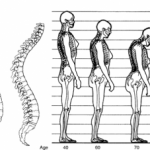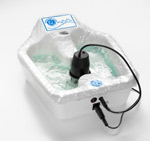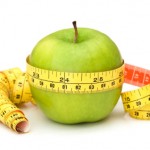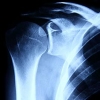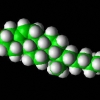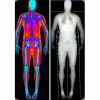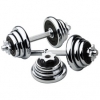Have you ever wondered how your bones can become brittle or break and why this increases with age? To better understand how bone is gained and lost, we first need to offer a short introduction on bone:
The human body contains 208 bones which make up approximately 30% of your total weight
- Bones assist in the production of blood cells and provide a valuable storage area for minerals
- Bone is active living tissue that is primarily collagen fibers reinforced by calcium and other minerals
- It is in a constant state of turnover as various hormonal actions work together to create more bone and keep it strong
- Our bones are alive and contain channels which blood flows through. Cells called osteoclasts travel among these channels constantly looking for, and removing old bone
- While doing so they often create small ‘holes’
- Cells called Osteoblasts then arrive on the scene with calcium and minerals to fill in these holes and create new bone
The process mentioned above is an ongoing one called bone remodeling. When we are younger this process repeats itself every three to four months, but slows down with age. Bone loss occurs when this process of making new bone falls behind the process of removing old bone.
Initial bone loss is termed Osteopenia as we mentioned earlier, and more severe loss is termed Osteoporosis (porous bone). Both bone conditions are actually symptoms of a more complex metabolic problem which creates porous and/or weakened bones. The root causes of porous bone and bone loss are mainly due to bone remodeling dysfunction (BRD), which is a new description that replaces osteoporosis. BRD occurs when osteoclasts and osteoblasts begin to slow down due to a combination of factors. These factors include:
- Poor dietary choices. This usually means that there is not enough calcium and mineral rich foods in the diet.
- Lack of exercise. Exercise stimulates osteoblasts to form new bone and moderate exercise has been shown to increase bone density.
- Hormonal Imbalances. Low testosterone in both males and females is linked to bone loss. Elevated estrogen and lowered progesterone levels in females can also contribute to bone loss. An unbalanced parathyroid gland can also weaken bone. It is responsible for regulating calcium in the body and needs to be functioning well to maintain its role in bone strength.
- Poor calcium absorption. Most calcium can only be absorbed in the small intestine, where it requires ideal pH conditions. It is often excreted or put back into the tissues, joints and blood where it can build up to toxic levels.
- Acidosis. An acidic body will often require alkalizing minerals to counter the negative effects of too much acid. For the body to achieve this condition, calcium (a dominant alkalizing mineral) can be drawn out of the bones to assist in this process, which contributes to bone loss.
- Low stomach acid. If your levels are low, overall digestion and absorption (including calcium and minerals) can be affected.
- Osteoclasts and osteoblasts slowing down.
- Over consumption of dairy products. Research and DEXA scans are showing that countries with the highest consumption of cow based dairy products also suffer from the highest incidence of BRD. Milk is not digested or processed well in the human as only about 30% is absorbed. This leads to lower absorption rates, and Osteoblast slowdown. It is also acidic and can lead to increased acidosis.
- Over consumption of calcium with low bio-availability. These include calcium derived from rocks, shells, coral and other sources that are often sold in supplements.
- Bisphosphonate Drugs. There are currently three kinds that are approved for use in Canada. They are Alendronate (Fosamax), Etidronate (Didrocal), and Risedronate (Actonel).
There are three scenarios in which this condition may happen:
Both situations i and ii cause the Osteoblasts to process a lot of calcium which causes them to become exhausted and slow down their abilities to create new bone. Food for thought!
